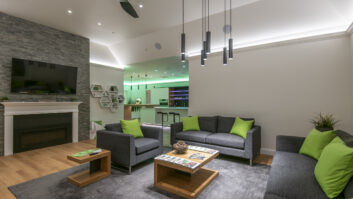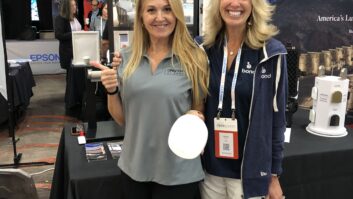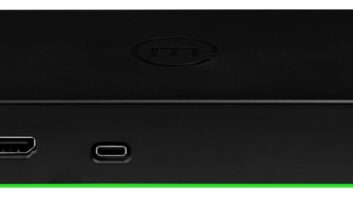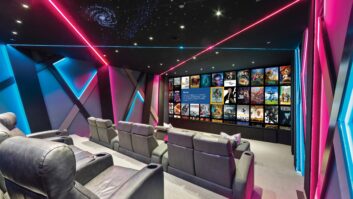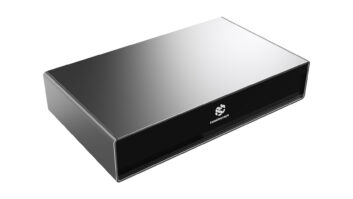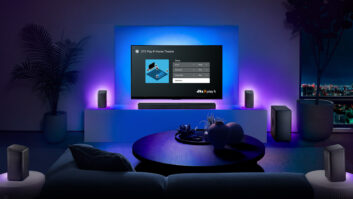NetStreams unveiled a pair of devices that deliver home theater surround sound directly to amplified, IP-addressable architectural speakers installed in the main home theater room and in secondary home theater rooms throughout the house.
When the TheaterLinX or CinemaLinX devices are paired with the company’s currently available IP-based multiroom-video system, consumers will be able to distribute standard- and high-definition video to remote rooms while streaming their multichannel soundtracks directly to those rooms’ IP-addressable in-wall and in-ceiling home theater speaker systems. In the remote rooms, consumers will be able to use the in-wall touchscreens of their IP-based DigiLinX multiroom audio system to control the main home theater’s audio and video sources, including networked settop boxes and DVRs. Consumers can also use any browser-based device, including Wi-Fi-enabled handheld touchscreens, to control the mutlrioom-audio and home theater systems.
Before the launch of TheaterLinX and CinemaLinX, the company’s multiroom video system sent two-channel audio directly to a remote room’s IP-based architectural speakers or directly to the room’s video display. To reproduce surround sound in the remote rooms, consumers had to install an A/V receiver or preamp processor, which in turn would drive traditional passive in-wall, in-ceiling or in-room speakers.
The TheaterLinX and CinemaLinX devices also enable any home theater to stream audio from any networked audio source in any other room.
The two devices make it easier for installers to build a bridge between a home theater system and NetStreams’s multiroom-A/V systems, explained president Kevin Reinis. “One of the classic problems with installations that feature both a home theater and a multiroom audio system is that the two systems are separate,” he said. “Sources located in the home theater are usually limited to that room, and sources available on the multiroom audio system are not easily available for playback in the home theater.”
The TheaterLinX device connects to the line-level analog and S/PDIF audio outputs of an A/V receiver or home theater preamp/processor. The device converts stereo and multichannel audio into an IP stream that is delivered to a home theater room’s IP-based architectural speakers and to IP-based architectural speakers throughout the house. TheaterLinX also makes it possible for the A/V receiver to reproduce a remote room’s networked audio sources, including PCs and iPod docks.
The planned CinemaLinX device is the company’s own preamplifier/surround-sound processor with IP outputs that stream up to 7.1 channels of surround sound to IP-based home theater speakers. CinemaLinX will be available in two versions: one with anodized-aluminum faceplate equipped with front-panel LCD touchscreen, the other without a touchscreen.
TheaterLinx is due in December at around $4,000, and CinemaLinX is targeted for second-quarter 2008 availability. They will follow the mid-2007 shipment of the company’s IP-based video-distribution system, which consists of A/V encoders and clients, each selling for about $3,000.
The distributed-video system, unveiled at last year’s CEDIA Expo, works like this: A MediaLinx A/V encoder connects to any video source to convert the source’s analog video output and audio output in real time into uncompressed IP streams, which are sent over an Ethernet network to other-room ViewLinx clients connected to video displays. ViewLinX clients can be controlled from the company’s in-wall touchscreens, handheld IR remotes and browser-based devices.
TheaterLinX incorporates one sensor input and three contact closures and IR and RS-232 for direct control of an A/V receiver.
Both versions of the CinemaLinX feature four digital audio inputs (RCA and S/PDIF), a network connection, and an embedded eight-port switch.
The company hasn’t determined the final complement of surround-sound decoders but notes that additional decoders can be added through firmware upgrades.







